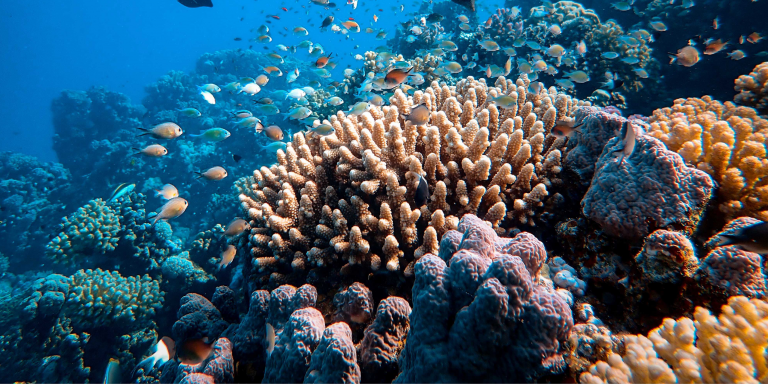
Corals are marine animals living in symbiosis with algae, notably zooxanthella, which provide them with the food necessary for their growth. Unfortunately, coral reefs, very important for the marine ecosystem, are affected by global warming, pollution and overfishing. Saving them is very important for the marine ecosystem, Ángela Martínez Quintana, a scientist at the University of Buffalo, New York, has created 3D digital models to determine which micro-habitats are best for young corals.
Coral reefs are underwater structures built from the limestone that corals produce. Their many cavities are true microhabitats for many species, Angela Martinez Quintana wanted to answer the following questions: ” Where do coral larvae, called planulae, like to settle? What seascapes help the young of different coral species thrive? And do different species compete for the same microhabitats on the reef?”
To this end, she has created 3D digital models that visualize all the details of the coral reef surface. This research is part of a larger project, funded by the National Science Foundation, that explores how and why some coral species resist while others die, led by Howard Lasker, PhD, at UB and Peter Edmunds, PhD, at California State University, Northridge.
Angela Martinez Quintana began her work with a basic tool: a caliper. She explains:
“When I started doing this, I didn’t know that reefs could be digitally reproduced, and I tried to measure the holes and crevices on the reef with a caliper. “
Faced with the magnitude of the task, she turned to Stuart Sandin, PhD, and Nicole Pedersen, researchers at the Scripps Institution of Oceanography, who advised her to use “structure from motion,” a photogrammetry technique that digitally reproduces 3D structures from overlapping sequences of 2D images.
Angela Martínez Quintana took close-up videos of the coral reefs of the U.S. Virgin Islands, including small square areas of the seafloor called quadrats. She was able to capture the topography of the reef in great detail, discovering objects hidden by others and areas hidden under overhangs.
She explains:
“These organisms can only be a few millimeters long, so to find them, I spent hours with my face 10 centimeters off the bottom of the reef. “
Analyzing coral preferences in a complex 3D ecosystem
Angela Martínez Quintana sought to understand the distribution of young corals in a complex 3D ecosystem and worked with biogeographer Adam Wilson, PhD, associate professor of geography in the UB College of Arts and Sciences to achieve this.
In doing so, Adam Wilson developed a computational approach to analyzing these models, each composed of a multitude of points containing information about the underwater landscape that together form a 3D polygonal mesh. The biographer’s innovative approach allows scientists to study the distribution of coral recruits (young soft corals) on this gridded surface, allowing the identification of microhabitat specificities adapted to the recruits of different coral species.
Angela Martinez Quintana explains:
“This method has the potential to be revolutionary, as it will allow us to better understand how organisms partition their environment and interact with each other on complex three-dimensional ecosystems. It could be used not only on coral reefs, but also on ecosystems such as the rainforest canopy. “
Adam Wilson adds:
“What is really innovative about Ángela’s research is that she is using these 3D models to learn more about ecological processes. She’s interested in the recruitment and successful growth of young corals on the reef, so she’s mapped where coral recruits are in that landscape, and then used statistical and machine learning models to try to infer which microhabitats are suitable for those corals to succeed. “
Howard Lasker, UB research professor of geology and professor emeritus of environment and sustainability, Angela Martínez Quintana’s thesis advisor, states:
“By developing these 3D models, Ángela has opened up new ways to answer critical questions that we didn’t have the tools to answer. “
For Angela Martínez Quintana, these 3D models hold great promise for both research and education.
Article source: University at Buffalo press release, by Charlotte Hsu.
Translated from Des scientifiques de l’Université de Buffalo créent des modèles 3D de coraux pour protéger les récifs coralliens









